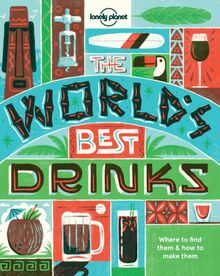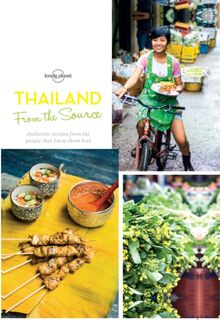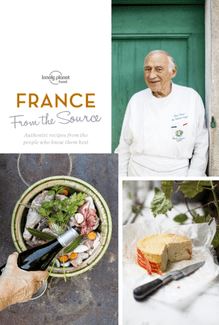-
 Univers
Univers
-
 Ebooks
Ebooks
-
 Livres audio
Livres audio
-
 Presse
Presse
-
 Podcasts
Podcasts
-
 BD
BD
-
 Documents
Documents
-
- Cours
- Révisions
- Ressources pédagogiques
- Sciences de l’éducation
- Manuels scolaires
- Langues
- Travaux de classe
- Annales de BEP
- Etudes supérieures
- Maternelle et primaire
- Fiches de lecture
- Orientation scolaire
- Méthodologie
- Corrigés de devoir
- Annales d’examens et concours
- Annales du bac
- Annales du brevet
- Rapports de stage
La lecture à portée de main
Vous pourrez modifier la taille du texte de cet ouvrage
Découvre YouScribe en t'inscrivant gratuitement
Je m'inscrisDécouvre YouScribe en t'inscrivant gratuitement
Je m'inscrisEn savoir plus
Vous pourrez modifier la taille du texte de cet ouvrage
En savoir plus

Description
Sujets
Informations
| Publié par | Lonely Planet |
| Date de parution | 01 août 2015 |
| Nombre de lectures | 2 |
| EAN13 | 9781743609552 |
| Langue | English |
| Poids de l'ouvrage | 26 Mo |
Informations légales : prix de location à la page 0,0000€. Cette information est donnée uniquement à titre indicatif conformément à la législation en vigueur.
Extrait
CONTENTS
Introduction
Cook’s notes
Central Thailand & Bangkok
Sophisticated, cosmopolitan food with royal, Chinese and Muslim influences
Northern Thailand
Mild, seasonal dishes with ancient roots
Northeastern Thailand
A full-flavoured, rustic cuisine that doesn’t skimp on spice
Southern Thailand
Thailand’s spiciest offerings, with an emphasis on seafood, chillies and salt
Basic recipes
Recipe sources
About the authors
Glossary
INTRODUCTION
The key to creating outstanding Thai food can be summed up in one word: balance.
Whether it’s a creamy green curry, steaming soup neua or zingy som tam , all Thai dishes strive for that perfect balance of hot, sweet, sour and salty flavours, each one punchy without overpowering the others.
But while this delicate interplay runs through the expansive range of the nation’s dishes, Thailand’s culinary heritage is remarkably localised. Head north to the ancient cities of Lampang and Chiang Mai and the dishes you’ll encounter bear witness to the region’s relatively cool climate, with its mild seasonal food rich with bitter flavours. Further east, nearby Laos flaunts its culinary influence and, direct from the banks of the Mekong, freshwater fish dominates Isaan menus. Head for the beaches of the south and, unsurprisingly, seafood reigns supreme, while the chilli wields its might most heavily here too. And in Bangkok, the geography of the central plains, influences of the country’s predominate minorities and the wealth of the royal palace have all served to shape the local cuisine.
But what doesn’t vary, no matter which region you find yourself in, is the Thai people’s emotional connection to food. Wherever they’re found, these dishes signify history and heritage: a family recipe, created in the same way for generations, or a regional tradition, evolving with the twists and turns of geography and social history. The cult of food is an incredibly powerful theme to the Thai, for this is no fast-food cuisine: rich stocks bubble and simmer, patiently, for hours, while spices are pounded vigorously by hand, over and over, the better to draw out their complex flavours. And, come mealtimes, eating in Thailand is a communal affair, the food shared around the family table as the day’s tales unfold.
Make no mistake: in Thailand, it’s not just food: it’s a labour of love.
COOK’S NOTES
This book aims to deliver Thailand’s best local dishes – direct from the kitchens where they’ve been perfected and practised for decades or generations. Authenticity is at the heart of every dish we feature.
That means that some ingredients may be difficult to find in general stores. Most should be available in Asian supermarkets or online but, where possible, we have suggested possible substitutes too. The glosssary on Click here will help to identify unfamiliar ingredients.
It will come as no great surprise that authentic Thai food is incredibly spicy, especially to palates not accustomed to such fiery heat. Should you prefer a milder flavour, feel free to adjust the levels of chilli you find in the recipes. You may prefer, too, to deseed your chillies before cooking with them to remove a little of the kick from the chillies’ heat.
In the spirit of authenticity, we have retained the chefs’ original methods in these recipes. To make a paste, for example, you’ll find instructions to pound the ingredients using a mortar and pestle, as the cooks themselves do. If you’re short on time (or energy) though, you can use a food processor or stick blender instead.
The recipes in this book are designed to work in the context of a Thai meal, in which a number of dishes are served in the centre of the table for all to share. For a complete Thai meal with rice, four dishes – a relish with a few of its accompaniments, a soup, a curry (perhaps with a side dish) and a salad – will serve four hungry people. Some recipes are one-dish meals, such as minced pork and holy basil stir-fry ( Click here ); the serving size on each page will reflect this.
For basic recipes for rices and other common dish additions, see Click here .
CENTRAL THAILAND & BANGKOK
Sophisticated, cosmopolitan food with royal, Chinese and Muslim influences
THAI-MUSLIM STYLE SALAD WITH POTATO AND TOFU
Salat khaek
SATAY CHICKEN SKEWERS
Sate kai
GRILLED AUBERGINE SALAD
Yam makheua yao
GRILLED BEEF SALAD
Yam neua yaang
DEEP-FRIED CATFISH & GREEN MANGO SALAD
Yam plaa duk fuu
POMELO SALAD WITH GRILLED CHICKEN & PRAWNS
Yam som oh kai yaang kap kung
CHICKEN GREEN CURRY
Kaeng khiaw waan kai
RED CURRY WITH PINEAPPLE & PRAWNS
Kaeng hua sapparot kap kung
EGG & PORK BELLY BRAISED WITH CINNAMON & STAR ANISE
Khai phalo
STIR-FRIED PRAWNS WITH THAI HERBS
Kung phat chaa
COCONUT & CURRY SPICED PRAWNS
Kung phat phong karii
RICE NOODLES WITH COCONUT SAUCE
Mii kathi
HAKKA-STYLE FRIED NOODLES
Phat bamii lueang
STIR-FRIED MINCED PORK WITH CHILLIES & HOLY BASIL
Phat kaphrao muu
FLASH-FRIED MORNING GLORY
Phat phak bung fai daeng
CURRIED STIR-FRIED PORK WITH AUBERGINE
Phat phet muu
THAI FRIED NOODLES WITH PRAWNS AND EGG
Phat thai
SWEET, CRISPY PORK RIBS & SALTED SRIRACHA CABBAGE
Sii khrong muu krawp waan
DEEP-FRIED PRAWN PATTIES
Thawt man kung
CHILLI & COCONUT DIP WITH FRESH HERBS & VEGETABLES
Nam phrik lon
COCONUT CAKE
Khanom ba bin
JASMINE-INFUSED AGAR-AGAR WITH TROPICAL FRUIT SALAD
Khanom dawk mali
CRISPY COCONUT CUPS
Khanom khrok
COCONUT AND MUNG BEAN PUDDING
Maw kaeng thua
TAPIOCA DUMPLINGS IN COCONUT CREAM
Pu ngat
THAI-MUSLIM STYLE SALAD WITH POTATO AND TOFU
Salat khaek
Take the framework of a Western-style salad, add a dressing that blends chilli, curry powder and coconut milk, and you have this uniquely Thai-Muslim-style light meal.
Source // Khun Sanusi Mareh
Location // Silom Thai Cooking School
Y am , or Thai-style salads, are an obligatory part of a balanced Thai meal. But eaten with rice, and typically revolving around meat or seafood rather than greens or vegetables, yam are consumed more like main dishes. More familiar to us in the West, both in terms of its ingredients and manner of serving, is salat khaek , ‘Muslim salad’, a staple of the Thai-Muslim repertoire in Bangkok and central Thailand.
Salat khaek ( khaek literally translates as ‘guest’, a common yet somewhat derogatory word that’s often used to refer to people of Muslim or South Asian descent) is a hearty, stand-alone salad that typically unites lettuce, hard-boiled egg, potato, tofu, onion and tomatoes, although these ingredients can vary. According to Sanusi Mareh, a Muslim and owner of Bangkok’s Silom Thai Cooking School, ‘Any ingredient can be used in salat khaek to make it more colourful, but it must include deep-fried potato chips.’
Another obligatory element of salat khaek is its unique dressing, which has elements of a Western-style salad dressing while also emphasising the sweet, rich flavours of Thai-Muslim cuisine. ‘Unlike other Thai salads, the dressing here includes egg yolk and curry powder,’ explains Sanusi, ‘and it’s also sweet, and creamy from coconut milk.’ In terms of flavour, texture and appearance, the dressing served with salat khaek seems to occupy a place somewhere between an American-style salad dressing and the dipping sauce that accompanies satay, grilled skewers of meat, another Thai-Muslim standard.
And like Western-style salads, salat khaek can be eaten on its own, as a one-dish meal, but it’s an excellent counterpoint as part of a larger Thai meal. If serving salat khaek as part of a meal, the salad’s rich dressing means that stir-fried vegetables or a light soup might be a good accompaniment. AB
Tamarind sauce
Tamarind is an essential ingredient, offering a sour component to dozens of Thai dishes, and it comes in a few confusing varieties with similar names. The difference between tamarind pulp, tamarind paste and tamarind sauce is a little in the eye of the beholder. Any variety used in cooking is simply the shelled fruit, with seeds and tough fibres removed, and some water added to loosen it up. You can buy it as a block of pure shelled tamarind (sometimes still with seeds and fibres, which need to be strained out eventually) or as a pre-made sauce or paste, often called tamarind pulp just to confuse things. If using the block – which is recommended – it needs to be hydrated, usually with a ratio of about one part tamarind pulp to three parts warm water. Put chunks of the block in a bowl, add the warm water, and work it with the back of a spoon until the pulp dissolves into the water, making tamarind sauce. Strain out the seeds and coarse fibres if present.
Serves 2 as a light meal
Preparation time: 45 mins
Cooking time: 15 mins
Ingredients
1 potato
400g block firm tofu, cut into thin slices
oil, for deep-frying
1 small head of lettuce, leaves separated
5 small cucumbers, sliced
1 onion, thinly sliced
10 cherry tomatoes
3 hard-boiled eggs, halved
For the dressing (makes more than is needed for the recipe)
2 small dried chillies, deseeded and soaked in warm water
¼ tsp salt
60g shallots, finely sliced
1 tsp curry powder
2 hard-boiled eggs, yolks only
120g (4 oz) ground roasted peanuts
500ml (18 fl oz) coconut milk
3 tbsp fish sauce
80g palm sugar
4 tbsp tamarind sauce (see below) 1 First, prepare the dressing. In a mortar and pestle (or food processor), grind the chillies, salt, shallots and curry powder until you have a fine paste. Set aside. 2 In a medium-sized bowl, combine the chilli paste, egg yolks and ground peanuts. Set aside. Thinly slice the potato and soak the slices in a bowl of water and set aside. 3 In a medium-sized pan over medium heat, bring 250ml of the coconut milk to a simmer. Add the chilli-egg mixture, the remaining coconut milk, fish sauce, sugar and tamarind. Sim
-
 Univers
Univers
-
 Ebooks
Ebooks
-
 Livres audio
Livres audio
-
 Presse
Presse
-
 Podcasts
Podcasts
-
 BD
BD
-
 Documents
Documents
-
Jeunesse
-
Littérature
-
Ressources professionnelles
-
Santé et bien-être
-
Savoirs
-
Education
-
Loisirs et hobbies
-
Art, musique et cinéma
-
Actualité et débat de société
-
Jeunesse
-
Littérature
-
Ressources professionnelles
-
Santé et bien-être
-
Savoirs
-
Education
-
Loisirs et hobbies
-
Art, musique et cinéma
-
Actualité et débat de société
-
Actualités
-
Lifestyle
-
Presse jeunesse
-
Presse professionnelle
-
Pratique
-
Presse sportive
-
Presse internationale
-
Culture & Médias
-
Action et Aventures
-
Science-fiction et Fantasy
-
Société
-
Jeunesse
-
Littérature
-
Ressources professionnelles
-
Santé et bien-être
-
Savoirs
-
Education
-
Loisirs et hobbies
-
Art, musique et cinéma
-
Actualité et débat de société
- Cours
- Révisions
- Ressources pédagogiques
- Sciences de l’éducation
- Manuels scolaires
- Langues
- Travaux de classe
- Annales de BEP
- Etudes supérieures
- Maternelle et primaire
- Fiches de lecture
- Orientation scolaire
- Méthodologie
- Corrigés de devoir
- Annales d’examens et concours
- Annales du bac
- Annales du brevet
- Rapports de stage




















